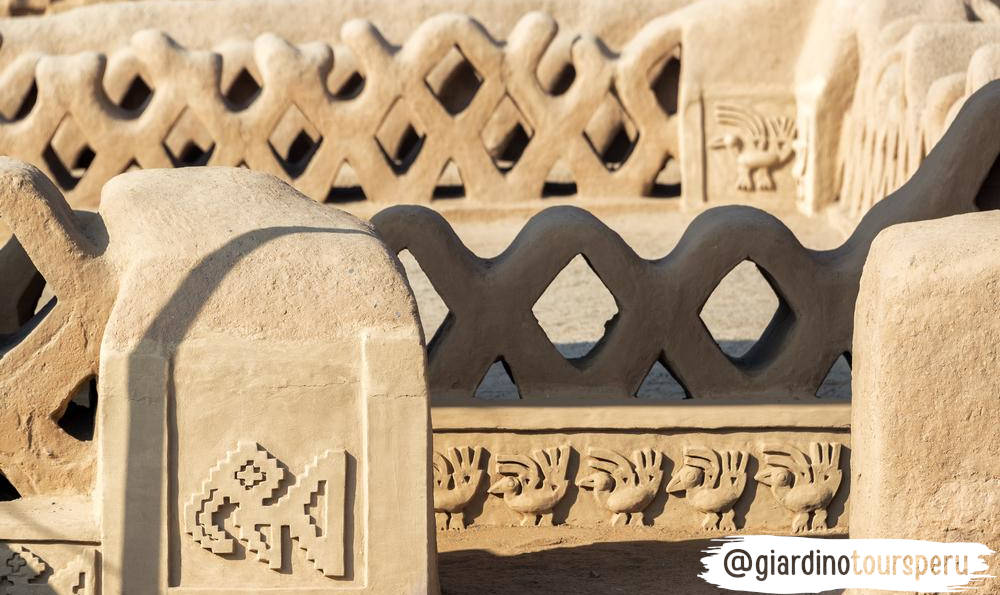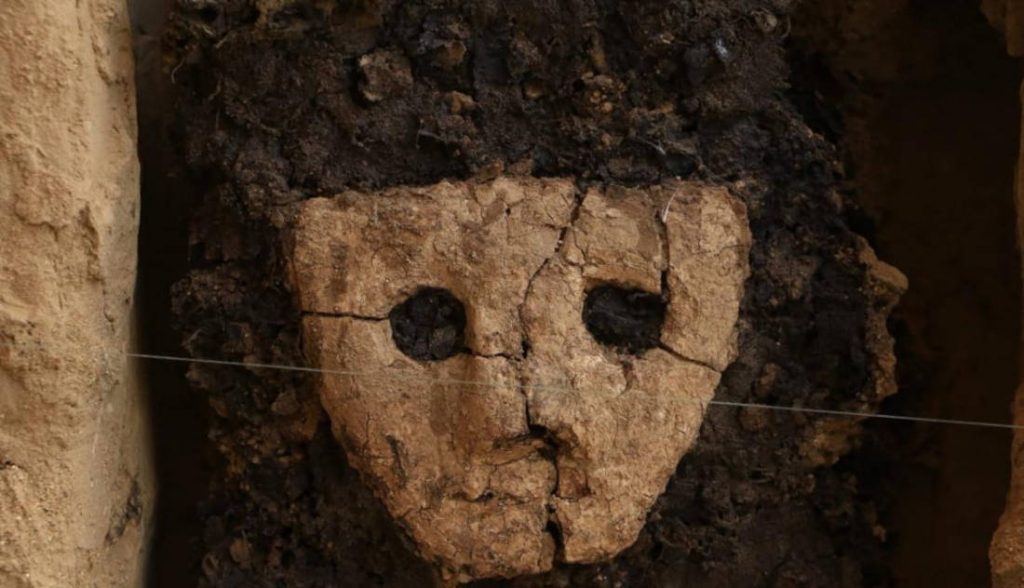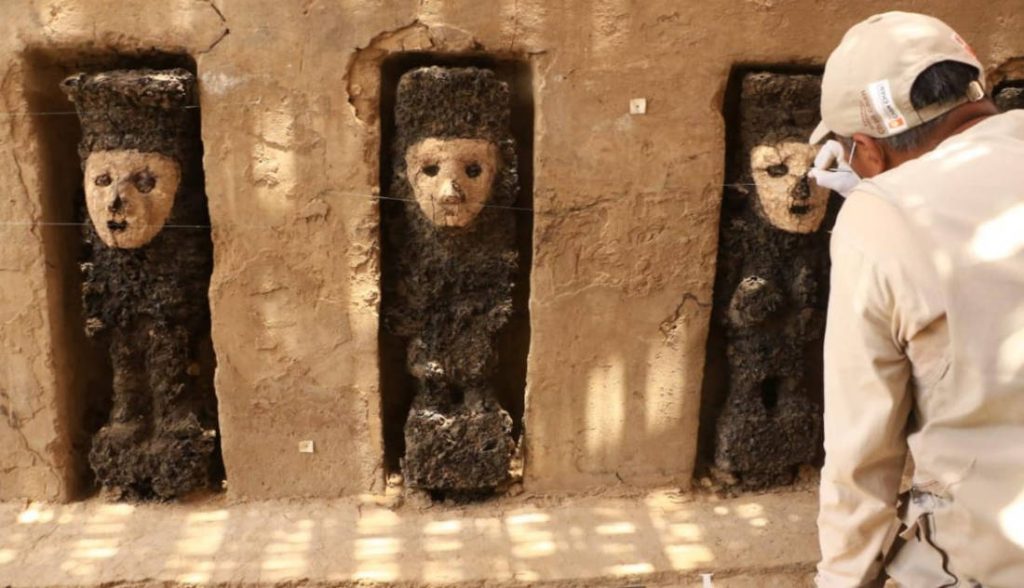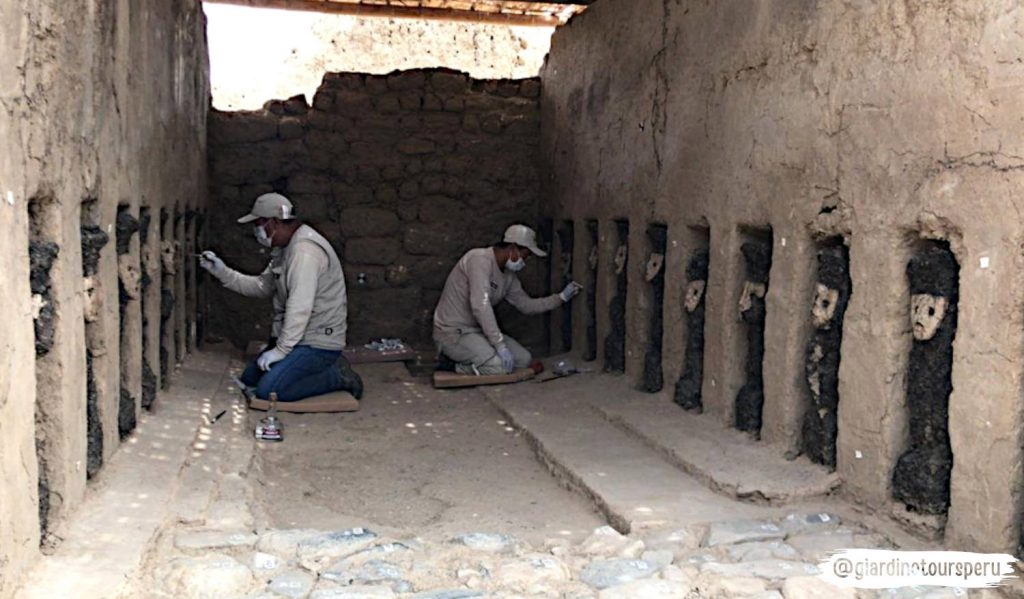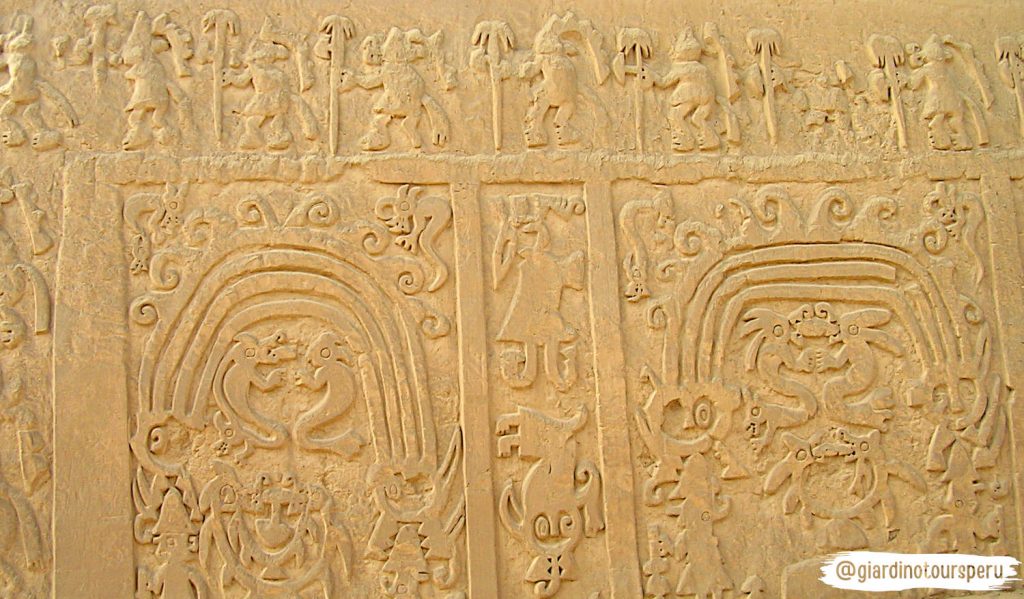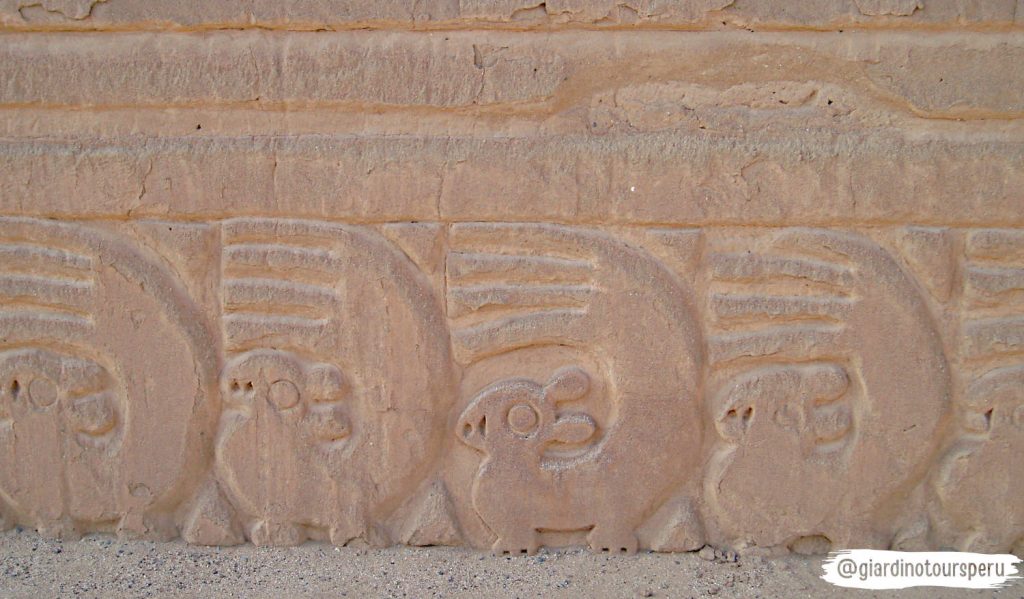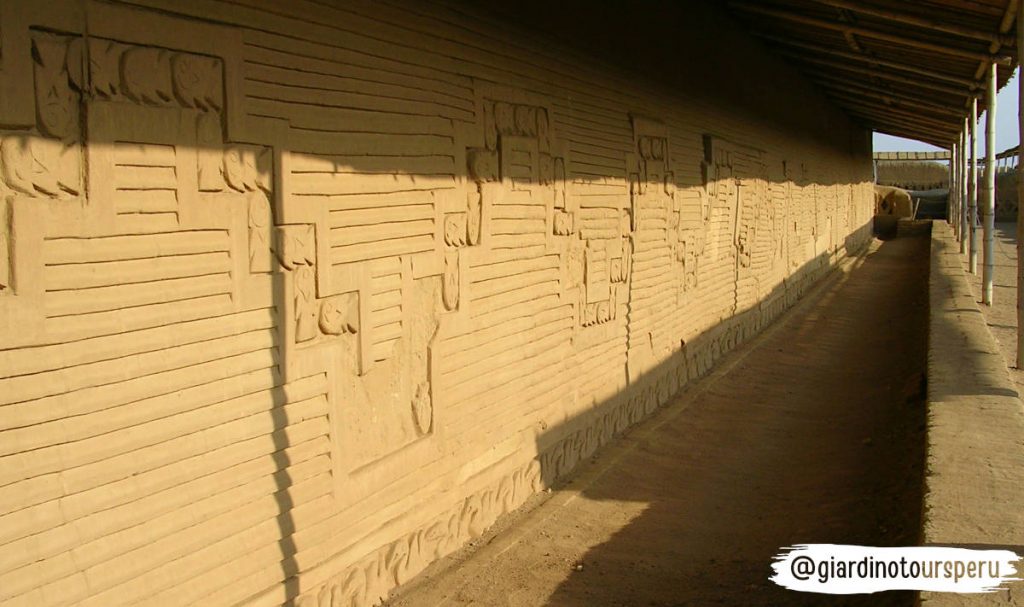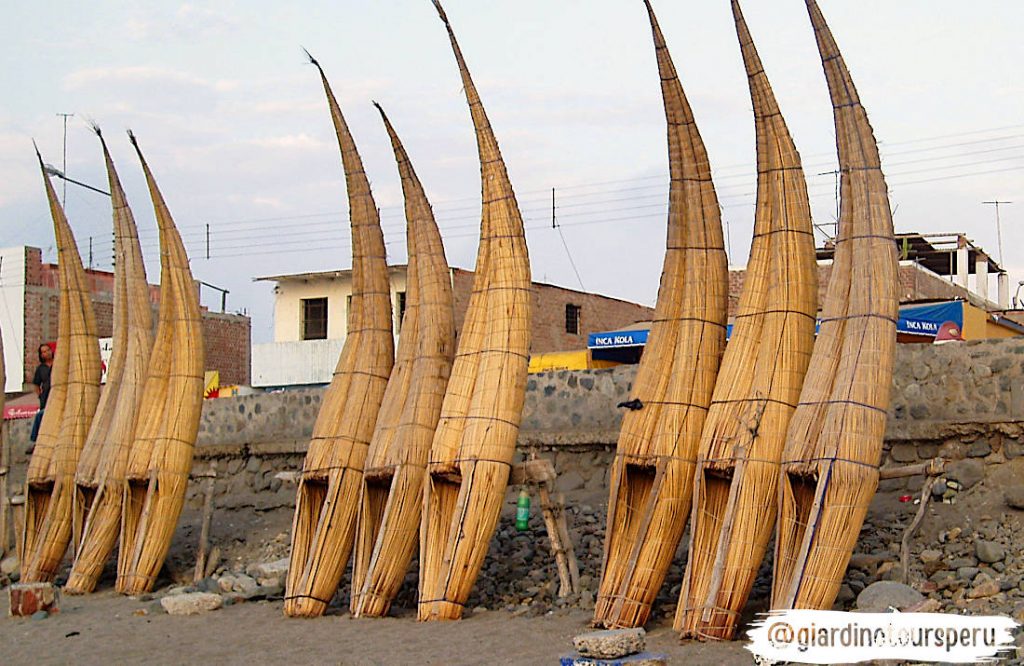Chan Chan mud Citadel
We have been totally impressed with the ability of the Incas to create a citadel with exactly carved stones in which no card can enter between 2 stones, but …What do you think of a city before the Incas, made of clay with perfectly detailed friezes on its walls and maintained to this day?
“It came from the sea, it is not known from where, in a fleet of rafts, with all its court and warriors, it reached the north coast of what is now Peru, in the Moche valley and founded a kingdom. His name was Tacaynamo and he was the first ruler of Chan Chan, the most important city in Chimú. He had a son named Guacricaur, and Guacricaur had also a son he named Ñancempinco. There were ten kings of this dynasty. The last, Minchancaman was defeated by the Incas, who destroyed the city and divided the kingdom. “ – (Anonymous, 1604)
So, tells the legend collected in the document “Anonymous History” written in 1604 by a Spanish chronicler, which narrates the founding of Chan Chan and the kingdom of Chimor.
This admirable city is located in the Moche Valley in the department of La Libertad and is currently one of the most important architectural representations of pre-Inca history.
When the Chimú empire was subdued by the Inca Tupac Yupanqui, around 1470, Chan Chan was sacked and destroyed. When the Spanish arrived, the town was a practically abandoned ruin. So Diego de Almagro founded in 1534, a new town that he called Trujillo, in honor of Francisco Pizarro’s small homeland of Extremadura.
Chan Chan Citadel and its details

Chan Chan, declared a World Heritage Site by UNESCO in 1986 is the largest mud citadel in America covering an area of approximately 20 square kilometers. Chan Chan has impressed the whole world with its magnitude and all the history that each one of its walls and narrow passages can tell us!
Most tourists only know Nik An (downtown house, in Spanish), the only one of the ten walled complexes open to the public. However, the largest adobe city in America – and the second in the world – is much more than that.
In the whole area there are numerous huacas (Tempels) and palaces, among them the incredible Utzh An (big house), which hid for 800 years the 20 wooden sculptures that surprised the world in 2017, after their first exhibition.
When archaeologists recently excavated the ceremonial entranceway to an ancient palace in Peru, they were excited to discover a series of 750-year-old wooden “guardians” flanking the passage. But there was an even bigger surprise in store as the statues emerged from the dirt: termites had chewed through the 19 wooden bodies over the centuries, leaving in their place two-foot-high human figures fashioned at least partially—and in some cases perhaps almost completely —from centuries-old insect excrement.
– Article National Geopraphic – Ancient palace guards ‘preserved’ .
Twenty wooden sculptures were buried under the sand that covered the entire Utzh An walled complex, from the years 1200 – 1350. It is the third time that figures of this type have been discovered; however, it is older and the representation attributed to it is also different.
In terms of ideology for the Chimú people, it seems that they are guardians. For those who enter to this site receive a visual impact from a wall that exceeds six meters high and the psychological impact, so the visitors realize that to the place they enter belongs to a very powerful being, so they must show humility and respect. – Said Henry Gayoso – Representative of the project.
Chan Chan Architectural details:
Its name, which comes from the muchil Jang-Jang and means “sun-sun” and was home to about 60,000 inhabitants. It is important to know that until today that excavations have brought to light only a small part.
This huge city is made up of 10 citadels and pyramids, 9 of these citadels have similar characteristics, however the form of stratification so strong reflects that it is divided by different social classes, for example, the main citadels are protected by high walls and they have a single access facilitating the control of those who entered and left.
Chan Chan & the figures on the walls:
The walls are adobe brick covered with a smooth surface into which intricate designs are carved. The two styles of carving design include a realistic representation of subjects such as birds, fish, and small mammals, as well as a more graphic, stylized representation of the same subjects.
The carvings at Chan Chan depict crabs, turtles, and nets for catching sea creatures (such as Spondylus. Chan Chan, unlike most coastal ruins in Peru, is very close to the Pacific Ocean. This suggests that their main economic activity was based on fishing.
The caballitos de totora and Huachanco:
Both in Moche ceramics and in some wall reliefs, figures have been found that look like curious slippers-shaped boats. They are the famous caballitos de totora, which continue to be made and use in the Huanchaco area, a beach area of Trujillo city.
These “Totoras” have hardly changed shape in several thousand years. It is known that they were used for fishing, and are made with bundles of reeds of the same name, a natural material that cannot hold for long time. The famous explorer Thor Heyerdal tried to show that with rafts similar to these, its first settlers would have arrived from Peru to Easter Island, a thesis discarded by the scientific community.
Something that is irrefutable is that both the Chimú and the Incas mentioned their origin in a legend, that said that the founder of their people would have mysteriously arrived on a raft from the mists of the sea.
The Totora boats of Huanchaco are the main attraction of this town. Here on this beach you can also see surfers, fishermen, family vacationers, seafood restaurants, vendors, etc.
How you can visit the Citadel of Chan Chan?
To get to Chan Chan you must go to Trujillo city. From Lima you can take a Bus (9 hrs) or also by plain in direct flights.
Chan Chan is only 5 km from the city of Trujillo, so you can take a bus in the direction of the city of Huanchaco, but indicate that you want to get off at the stop closest to Chan Chan.
If you go by Taxi, we recommend you take a safe one or organize it with your hotel.
The most recommended and practical way is to take a full day Tour to Chan Chan that includes not only the visit to the citadel but also the Site Museum, the Huaca Arco iris, Huanchaco beach and the temples of the Sun and the Moon. – In addition, an organized tour save a lot of time in your visits taking you to the most interesting places!
Visit a program to Trujillo and Chan Chan in this link.
🙂 We will be waiting for you!!!
Giardino Tours – Blog
#ITravelwithGiardino #OneTripManyExperiences
Source:
Andina. (19 de mayo de 2011). / Anonimo. (1604). Historia Anonima. / Reino Chimu; Peru: National Geopraphic / Vega, L. T. (2009). Arqueologia del Perú. /Arqueología Peru 2018
Other links of interest:
Quechua Travel Words: Useful words for a great Peru experience
Machu Picchu: Check these amazing secrets before the Tour
Cusco Tour: 3 differences between Machu Picchu, Mountain & Huayna Picchu

